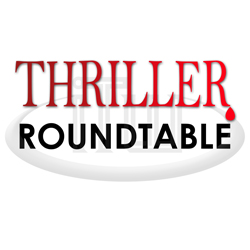

March 28th to April 3rd: “Dialogue can be tricky. As the author, how do you do it?”
Dialogue can be tricky, as the author has to give each character a unique voice that is also distinct from his or her own. Next week we’ll ask Lee Child, Jon Land, Joseph Flynn, Jim Duncan, James Scott Bell, Heywood Gould, and Lee Goldberg how they do it?
Previously a television director, union organizer, stage manager and law student, Lee Child is the author of the global #1 bestselling Jack Reacher thriller series.
Living and working away in the state of Ohio, Jim Duncan is a writer of dark, urban-fantasy-suspense. His first novel, DEADWORLD, published by Kensington, will be out in April, 2011.
Lee Goldberg is a two-time Edgar Award nominee and author of the bestselling Monk books based on the TV series. His many TV writing and/or producing credits include SeaQuest, Diagnosis Murder, Martial Law, Monk, and The Glades. He’s also the author of The Walk, Man with the Iron-On Badge, The Dead Man and Successful Television Writing.
Jon Land is the author of 29 books, 17 of which have been national bestsellers. STRONG AT THE BREAK, the third in his Caitlin Strong/Texas Ranger series, will be published by Forge in June. The 2nd book in the series, STRONG JUSTICE, was named a Top Thriller of the Year by Library Journal and was runner-up for Best Novel of the Year at the New England Book Festival. The first, STRONG ENOUGH TO DIE, is being developed as a film by producer Michel Shane and director Carl Franklin.
Joseph Flynn was born, raised and educated in Chicago. Then he got restless and started moving around: L.A., Honolulu, L.A. again and Central Illinois. He’s been published by Signet Books, Bantam Books, Variance Publishing and his own imprint, Stray Dog Press, Inc. He’s also had a screenplay optioned by 20th Century Fox. Two of his e-book titles, The President’s Henchman and The Next President are currently ranked in Amazon’s top 50 for political fiction. His e-book title Gasoline, Texas is at this moment ranked #6 in political humor.
James Scott Bell is the bestselling author of Plot & Structure (Writer’s Digest Books) and numerous thrillers, the latest being the e-book Watch Your Back. The former fiction columnist for Writer’s Digest, he has taught writing at Pepperdine University and numerous conferences in the United States, Great Britain and Canada. He lives and writes in L.A. Visit his website and his blog.
Heywood Gould got his start as a reporter for the New York Post. Later he financed years of rejection with the usual colorful jobs – cabdriver, mortician’s assistant, bartender. He has written thirteen books and nine screenplays, including “Fort Apache, the Bronx,” “Boys From Brazil,” “Cocktail,” “Rolling Thunder,” “Double Bang.” He has directed four features including “One Good Cop” starring Michael Keaton, “Trial By Jury” with William Hurt and “Mistrial” with Bill Pullman. His last book “Leading Lady” (2008) was a finalist for the Hammett Award. His new book, “The Serial Killer’s Daughter” comes out April 30, 2011. Please visit his website.
- LAST GIRL MISSING with K.L. Murphy - July 25, 2024
- CHILD OF DUST with Yigal Zur - July 25, 2024
- THE RAVENWOOD CONSPIRACY with Michael Siverling - July 19, 2024

